Abstract
The phospholipid fatty acid (PLFA) pattern was analyzed in a forest humus and in an arable soil experimentally polluted with Cd, Cu, Ni, Pb, or Zn at different concentrations. In both soil types, there were gradual changes in the PLFA patterns for the different levels of metal contamination. The changes in the forest soil were similar irrespective of which metal was used, while in the arable soil the changes due to Cu contamination differed from those due to the other metals. Several PLFAs reacted similarly to the metal amendments in the two soil types, while others showed different responses. In both soils, the metal pollution resulted in a decrease in the iso-branched PLFAs i15:0 and i17:0 and in the monounsaturated 16:1ω5 and 16:1ω7c fatty acids, while increases were found for i16:0, the branched br17:0 and br18:0, and the cyclopropane cy17:0 fatty acids. In the forest soil, the methyl branched PLFAs 10Me16:0, 10Me17:0, and 10Me18:0 increased in metal-polluted soils, indicating an increase in actinomycetes, while in the arable soil a decrease was found for 10Me16:0 and 10Me18:0 in response to most metals. The bacterial PLFAs 15:0 and 17:0 increased in all metal-contaminated samples in the arable soil, while they were unaffected in the forest soil. Fatty acid 18:2ω6, which is considered to be predominantly of fungal origin, increased in the arable soil, except in the Cu-amended samples, in which it decreased instead. Effects on the PLFA patterns were found at levels of metal contamination similar to or lower than those at which effects on ATP content, soil respiration, or total amount of PLFAs had occurred.
Full text
PDF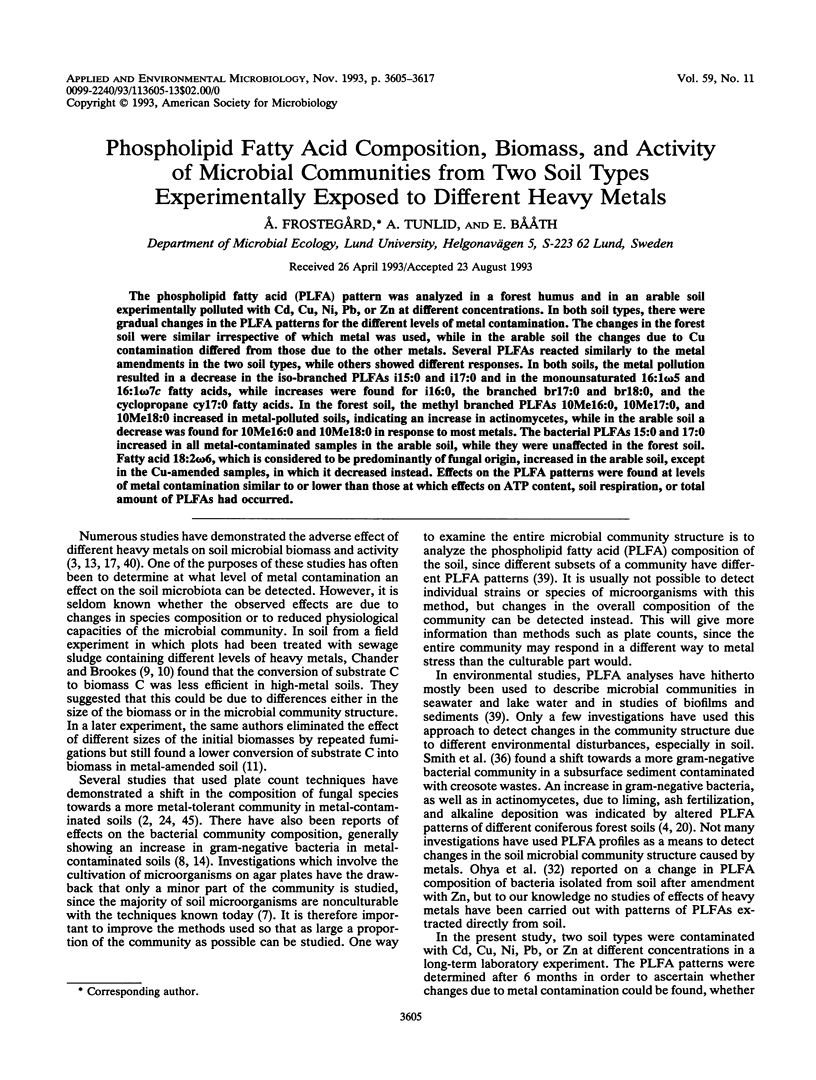
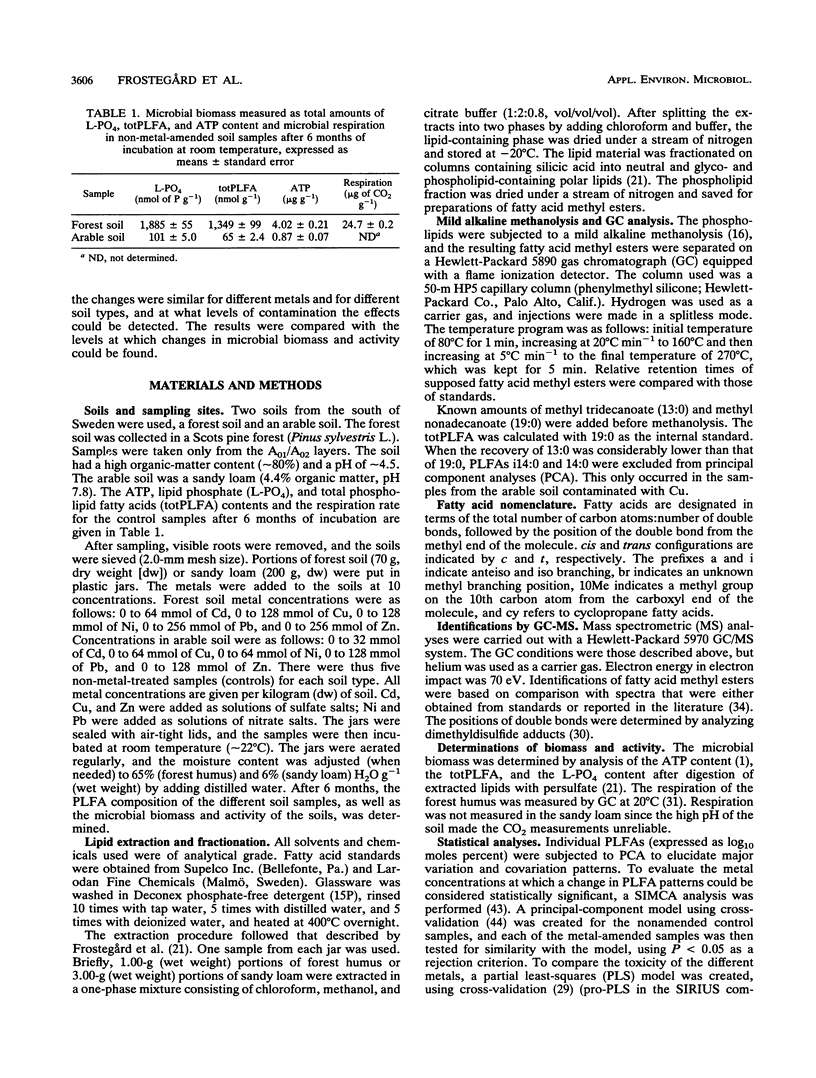
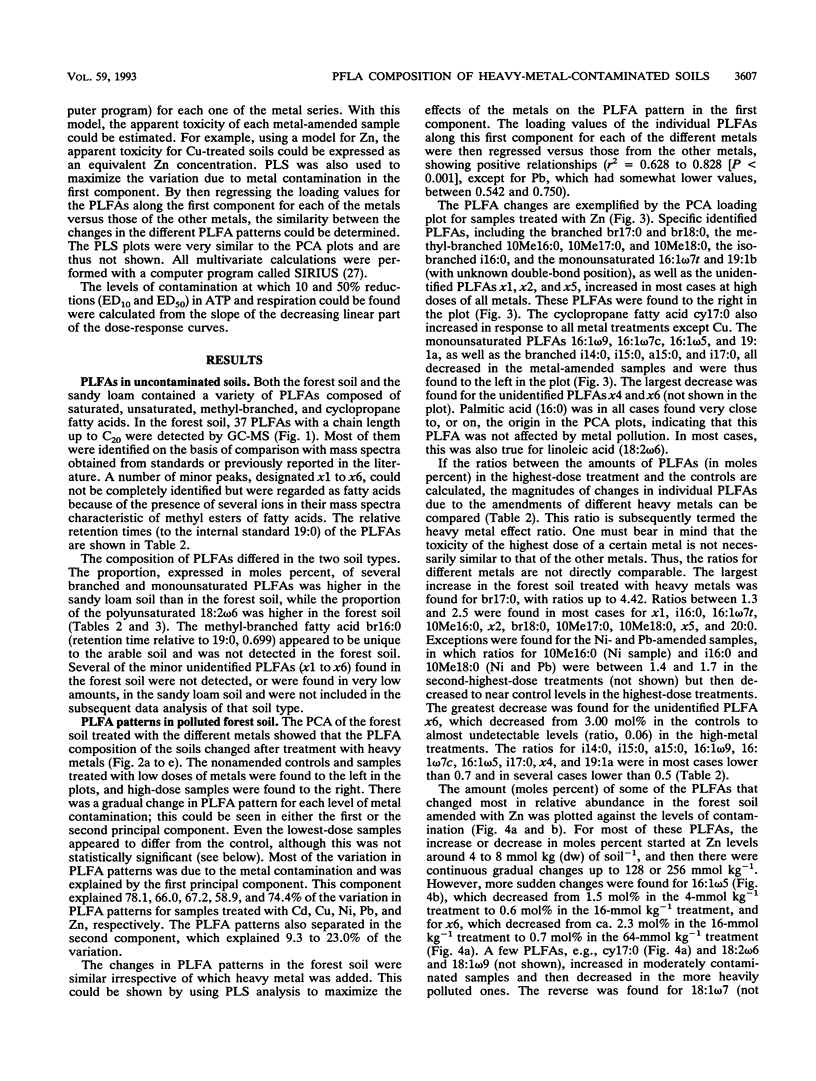
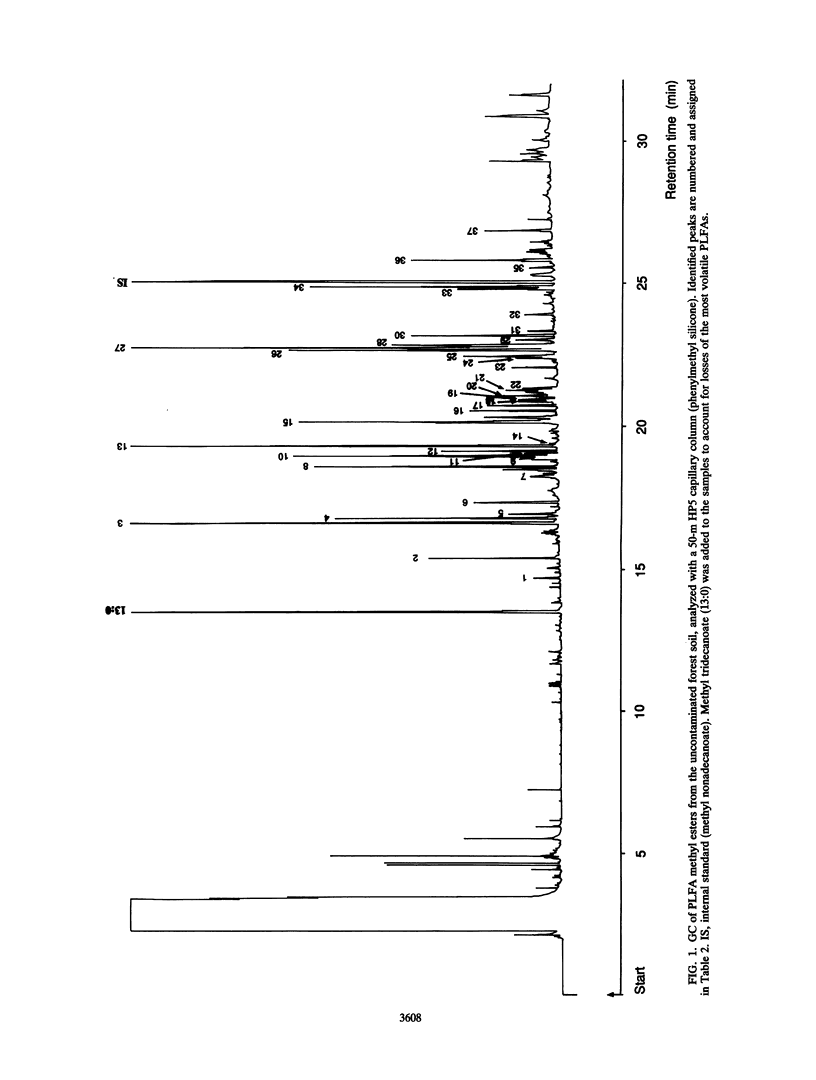
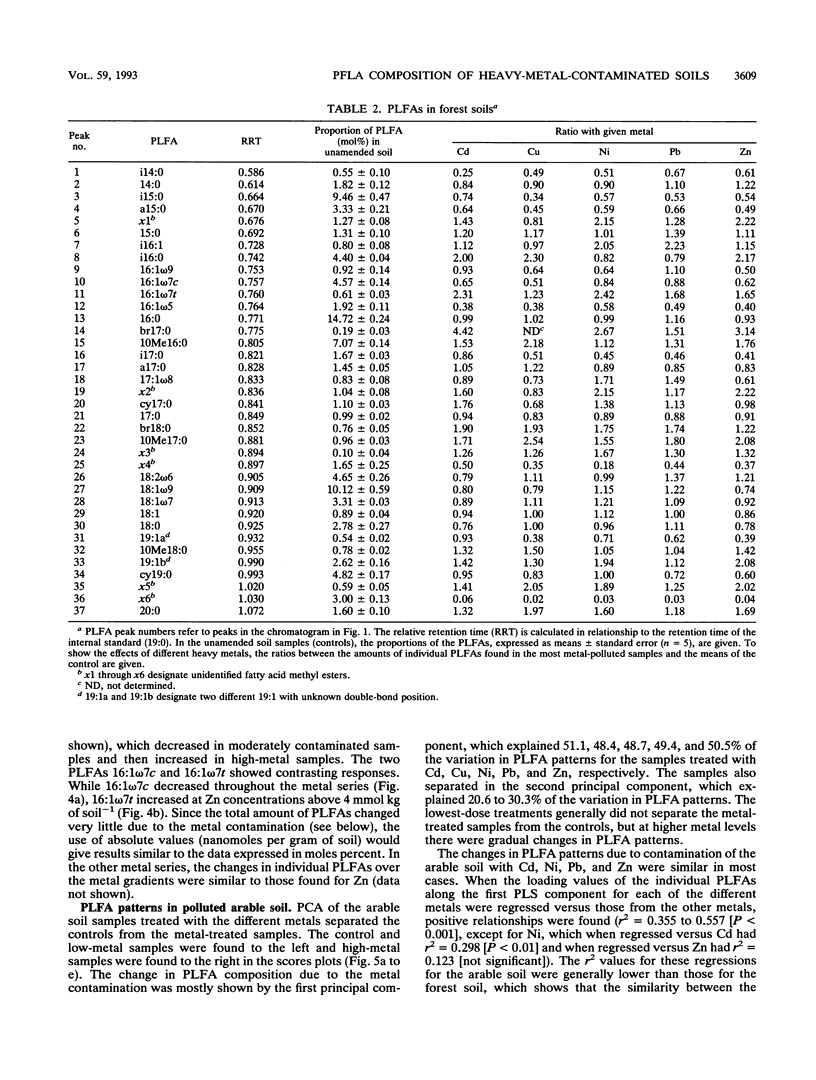
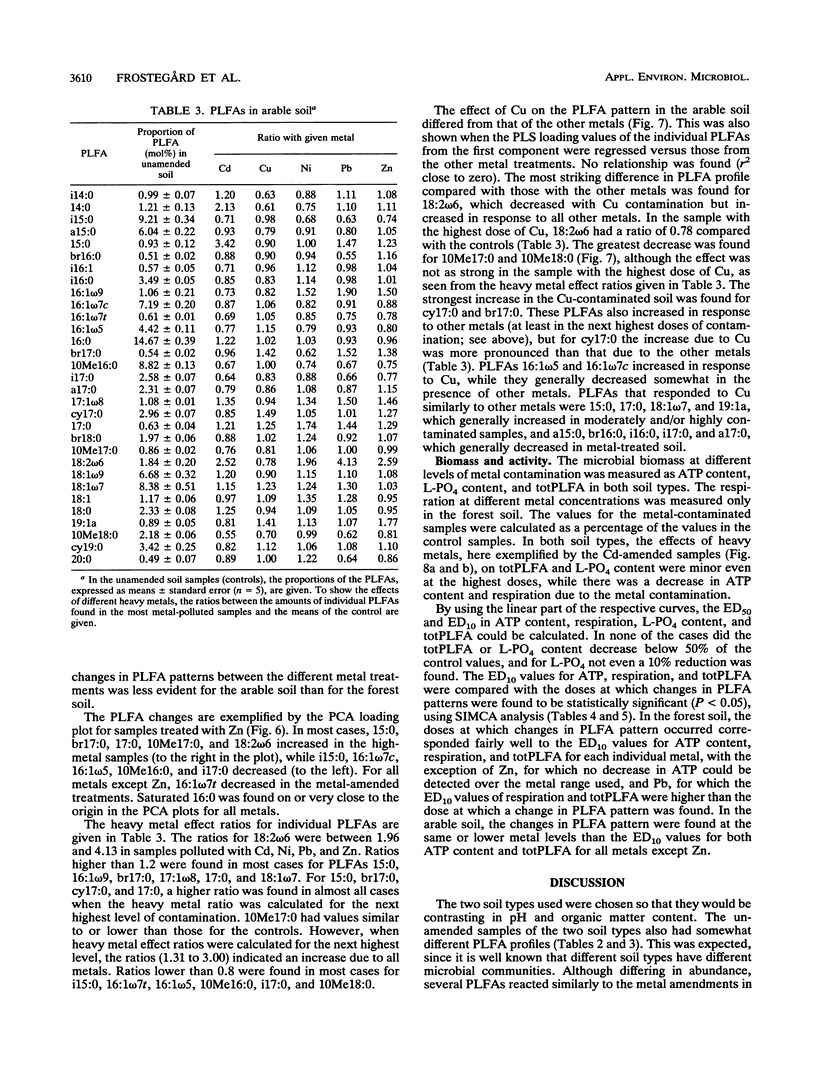
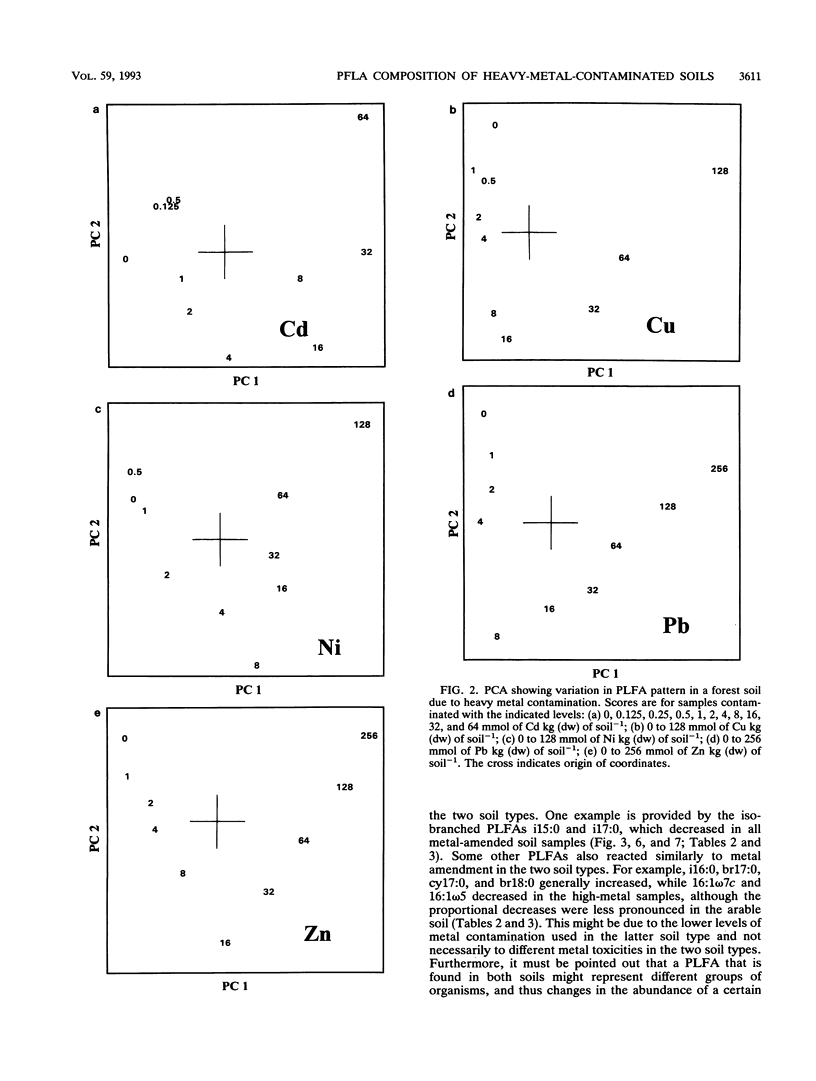
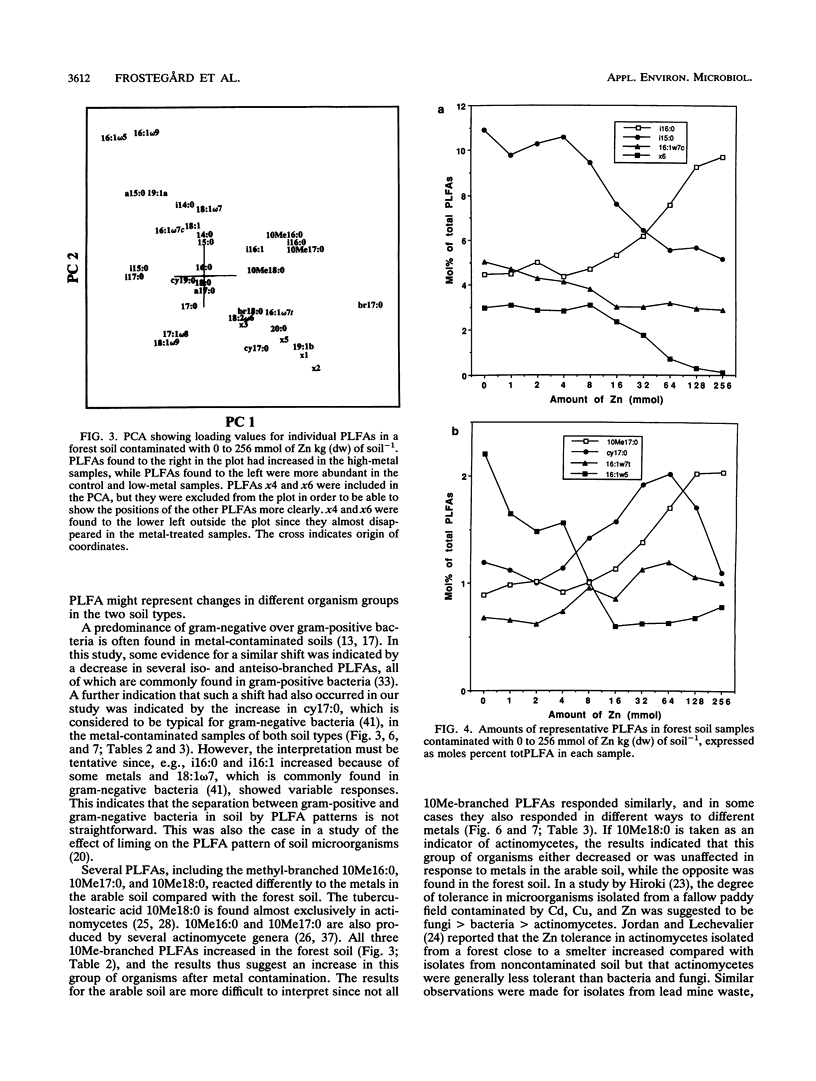
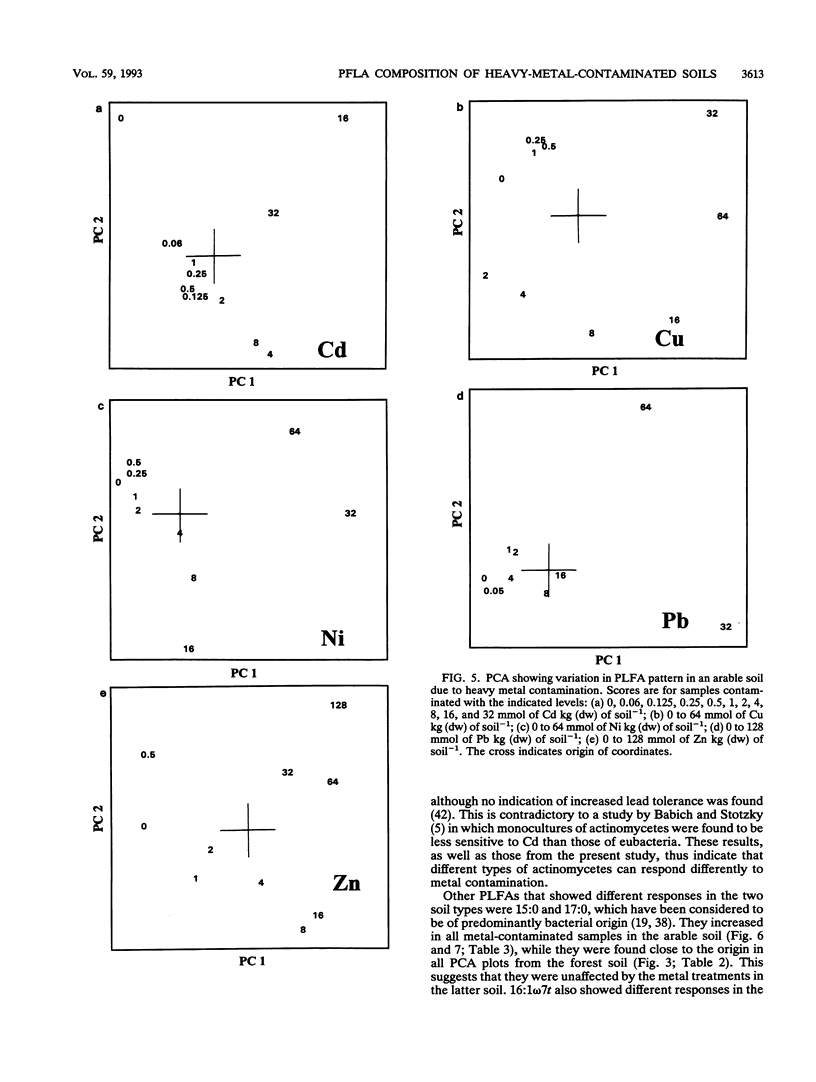
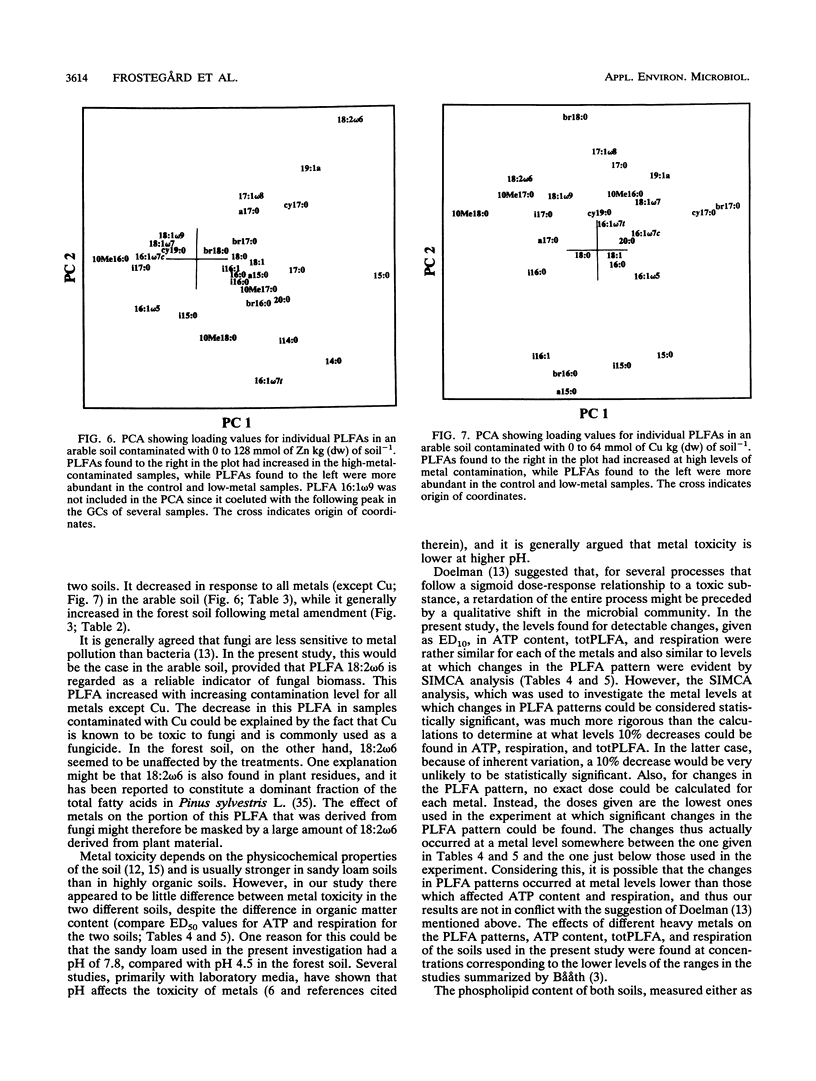
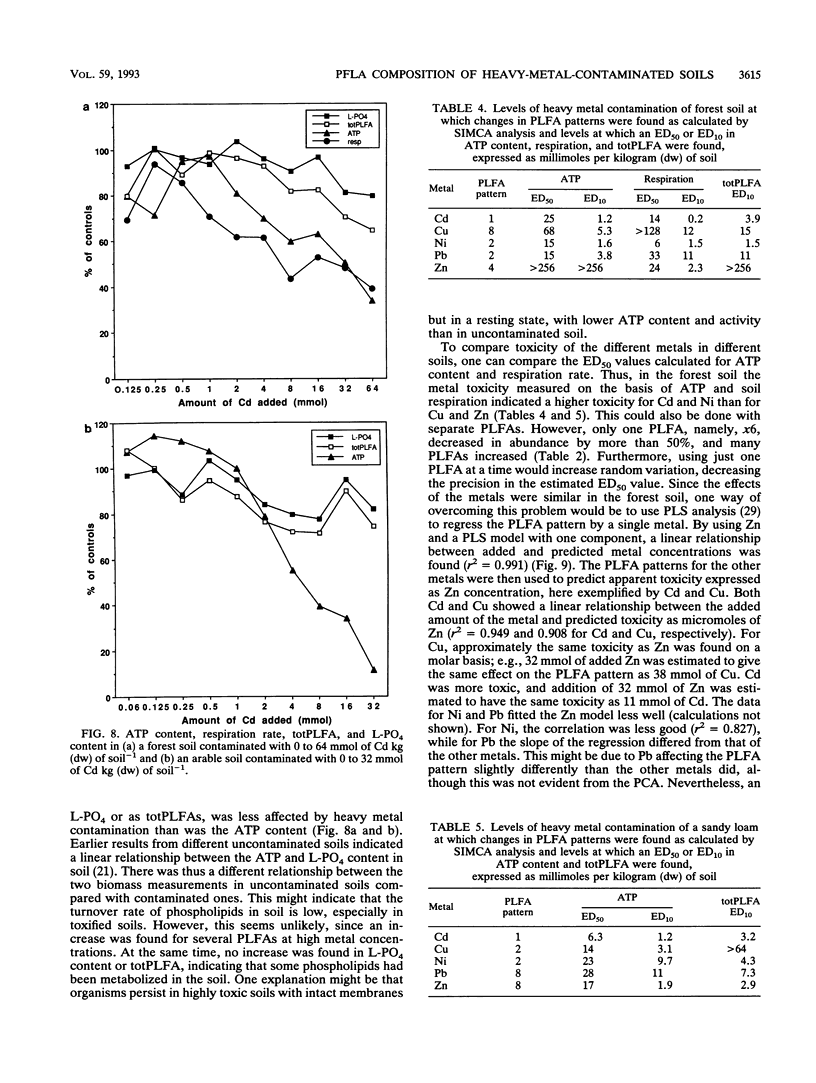
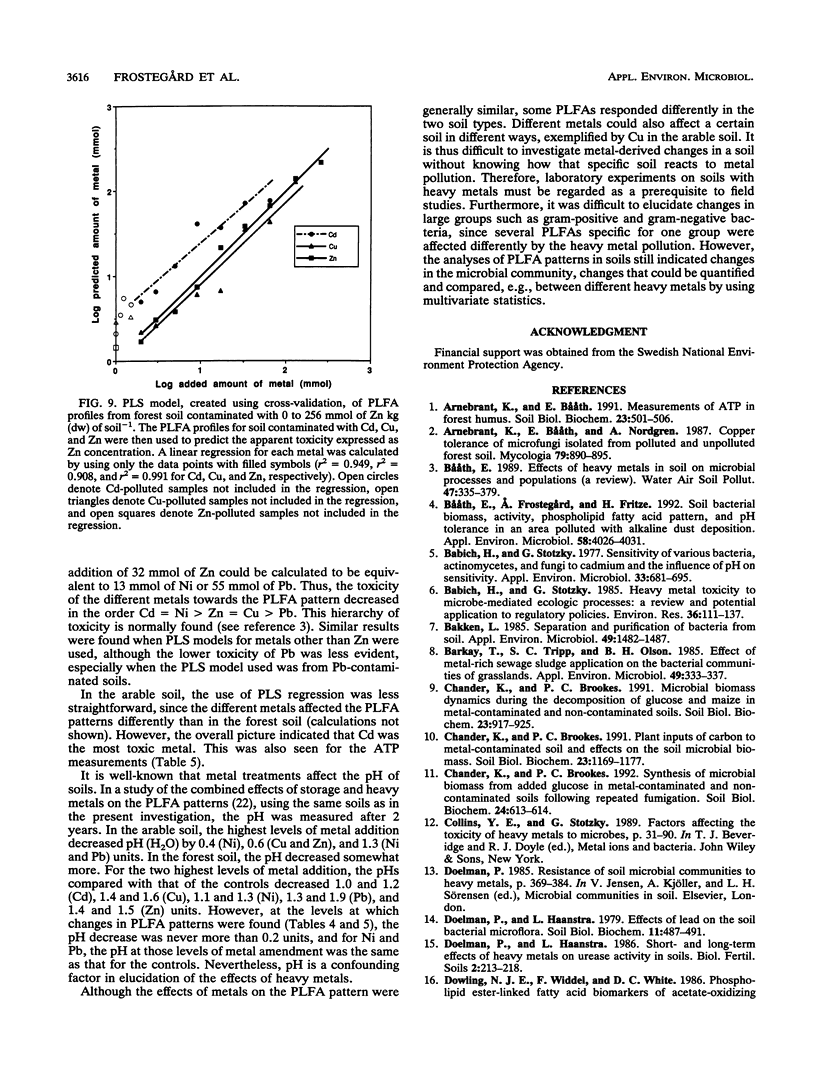
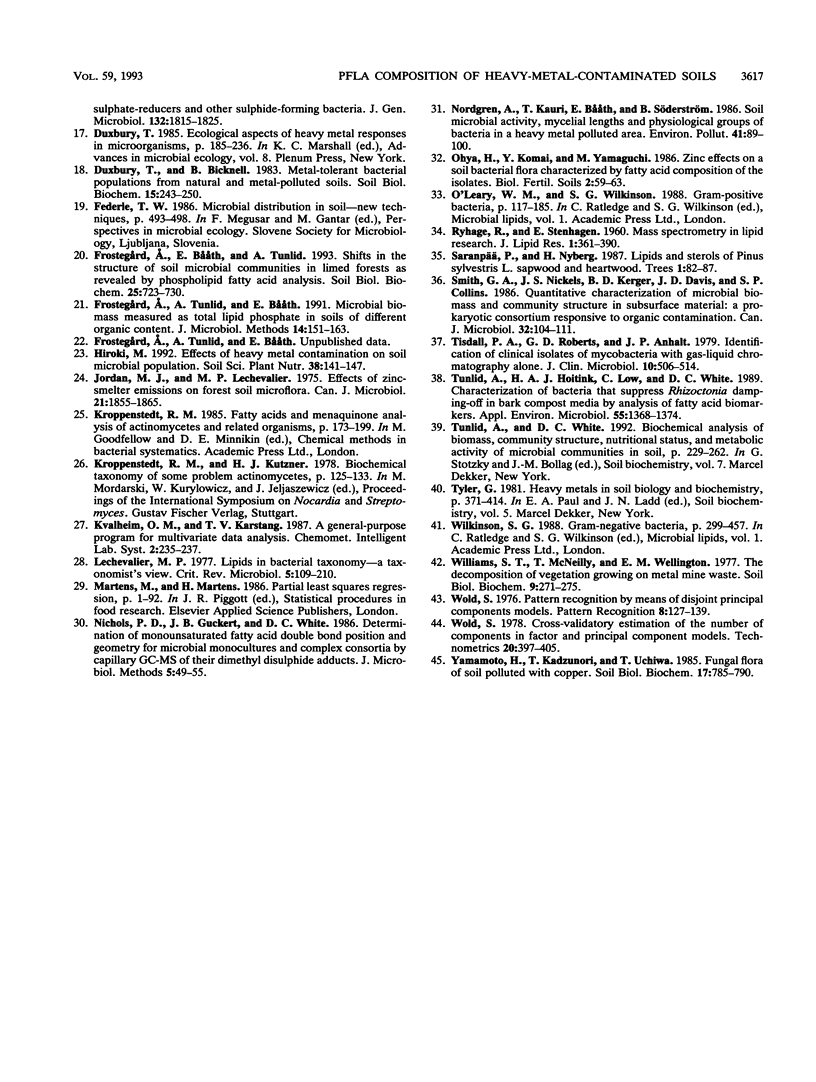
Selected References
These references are in PubMed. This may not be the complete list of references from this article.
- Babich H., Stotzky G. Heavy metal toxicity to microbe-mediated ecologic processes: a review and potential application to regulatory policies. Environ Res. 1985 Feb;36(1):111–137. doi: 10.1016/0013-9351(85)90011-8. [DOI] [PubMed] [Google Scholar]
- Babich H., Stotzky G. Sensitivity of Various Bacteria, Including Actinomycetes, and Fungi to Cadmium and the Influence of pH on Sensitivity. Appl Environ Microbiol. 1977 Mar;33(3):681–695. doi: 10.1128/aem.33.3.681-695.1977. [DOI] [PMC free article] [PubMed] [Google Scholar]
- Bakken L. R. Separation and purification of bacteria from soil. Appl Environ Microbiol. 1985 Jun;49(6):1482–1487. doi: 10.1128/aem.49.6.1482-1487.1985. [DOI] [PMC free article] [PubMed] [Google Scholar]
- Barkay T., Tripp S. C., Olson B. H. Effect of metal-rich sewage sludge application on the bacterial communities of grasslands. Appl Environ Microbiol. 1985 Feb;49(2):333–337. doi: 10.1128/aem.49.2.333-337.1985. [DOI] [PMC free article] [PubMed] [Google Scholar]
- Båth E., Frostegård A., Fritze H. Soil Bacterial Biomass, Activity, Phospholipid Fatty Acid Pattern, and pH Tolerance in an Area Polluted with Alkaline Dust Deposition. Appl Environ Microbiol. 1992 Dec;58(12):4026–4031. doi: 10.1128/aem.58.12.4026-4031.1992. [DOI] [PMC free article] [PubMed] [Google Scholar]
- Jordan M. J., Lechevalier M. P. Effects of zinc-smelter emissions on forest soil microflora. Can J Microbiol. 1975 Nov;21(11):1855–1865. doi: 10.1139/m75-269. [DOI] [PubMed] [Google Scholar]
- Lechevalier M. P. Lipids in bacterial taxonomy - a taxonomist's view. CRC Crit Rev Microbiol. 1977;5(2):109–210. doi: 10.3109/10408417709102311. [DOI] [PubMed] [Google Scholar]
- RYHAGE R., STENHAGEN E. Mass spectrometry in lipid research. J Lipid Res. 1960 Oct;1:361–390. [PubMed] [Google Scholar]
- Tisdall P. A., Roberts G. D., Anhalt J. P. Identification of clinical isolates of mycobacteria with gas-liquid chromatography alone. J Clin Microbiol. 1979 Oct;10(4):506–514. doi: 10.1128/jcm.10.4.506-514.1979. [DOI] [PMC free article] [PubMed] [Google Scholar]
- Tunlid A., Hoitink H. A., Low C., White D. C. Characterization of bacteria that suppress rhizoctonia damping-off in bark compost media by analysis of Fatty Acid biomarkers. Appl Environ Microbiol. 1989 Jun;55(6):1368–1374. doi: 10.1128/aem.55.6.1368-1374.1989. [DOI] [PMC free article] [PubMed] [Google Scholar]


